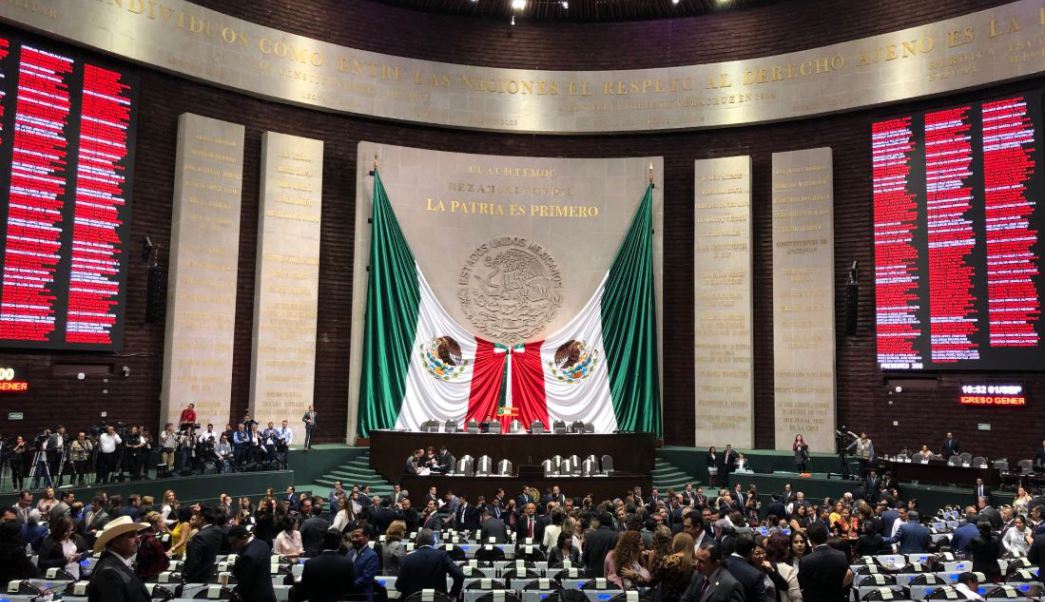As we all know on July 1st, Mexico held elections for President, Congress and various other offices.
The winner of the presidential election was Andres Manuel Lopez Obrador, known as AMLO, an acronym formed by his initials. AMLO doesn’t take office until December 1st, giving him a five-month transition period (in contrast to a U.S. presidential transition period of about two and a half months).
The newly-elected representatives and senators of the Mexican Congress, on the other hand, took office on September 1st.
The new Congress, the Congreso General de los Estados Unidos Mexicanos, is also known as the LXIV Legislatura del Congreso de la Unión, the “Sixty-fourth Legislature of the Congress of the Union.”
First, let’s look at the basic composition of the Mexican Congress to better understand what this particular body looks like. It’s helpful also to compare and contrast the Mexican Congress with the U.S. Congress. There are similarities and differences.
Like the U.S. Congress, the Mexican Congress is bicameral, with two chambers:
the Senado (equivalent of U.S. Senate), and the Cámara de Diputados (equivalent of U.S. House of Representatives).
The U.S. Congress has 100 senators (two for each state) and 435 representatives. The Mexican Congress has 128 “senadores” and 500 “diputados.”
In Mexico, diputados are elected for three-year terms, and senadores for six-year terms.
Congressional mid-term elections in the US occur at two-year intervals. For example, there is a mid-term election this year, 2018, coming up in November.
In Mexico, the mid-terms are every three years. So, the next one is scheduled for 2021.
In the U.S. Congress, every senator represents a state and every representative represents a district. It’s more complicated in the Mexican Congress.
In the Cámara de Diputados, 300 of the 500 diputados are elected by districts, while 200 are chosen through proportional representation. In proportional representation, seats are allocated based on the percentage of votes received by a political party nationwide.
In the Mexican Senado, there are three senadores from each of Mexico’s 32 states (the states now include the former “Federal District,” which was promulgated to statehood in January of 2016).
These are 96 of a total of 128 senadores.
How are senadores chosen? Political parties run state candidates for the Senado in pairs. The pair which receives the most votes is elected to the Senado to represent that particular state, while a state’s third senador is from the political party that came in second in that state’s election.
Again, these senadores account for 96 of the plenary total, with the added 32 elected by proportional representation based on the nationwide vote.
Another aspect of the Mexican Congress that changed in this election was the reelection policy.
Before this election, senadores and diputados in the Mexican Congress were barred from successive reelection, though they could return later and stand for election for a later term.
That rule was changed this election, and senadores and diputados could stand for reelection in the 2018 elections.
The election was held on July 1st, 2018, and while the new president doesn’t take office until December 1st, the present Congress was installed on September 1st.
Let’s take a look at the political parties represented in the new Mexican Congress:
THE MEXICAN SENATE
(Parties listed in descending order based on their number of seats)
1. MORENA (Movimiento Regeneración Nacional) – 55 seats
2. PAN (Partido Acción Nacional) – 23 seats
3. PRI (Partido Revolucionario Institucional) – 13 seats
4. PES (Partido Encuentro Social) – 8 seats
5. PRD (Partido de la Revolución Democrática) – 8 seats
6. Movimiento Ciudadano (Citizen Movement) – 7 seats
7. Green Party (Partido Verde Ecologista de México) – 7 seats
8. PT (Partido del Trabajo) Labor Party – 6 seats
9. Partido Nueva Alianza, the PNA or PANAL – 1 seat
Total: 128 seats
THE MEXICAN CHAMBER OF DEPUTIES
1. MORENA (Movimiento Regeneración Nacional) – 189 seats
2. PAN (Partido Acción Nacional) – 83 seats
3. PT Partido del Trabajo, the Labor Party – 61 seats
4. PES (Partido Encuentro Social) – 56 seats
5. PRI (Partido Revolucionario Institucional) – 45 seats
6. Movimiento Ciudadano (Citizen Movement) – 27 seats
7. PRD (Partido de la Revolución Democrática) – 21 seats
8. Green Party (Partido Verde Ecologista de México) – 16 seats
9. Partido Nueva Alianza, the PNA or PANAL – 2 seats
Total: 500 seats
The President of the Senate is Marti Batres, and the President of the Chamber of Deputies is Porfirio Muñoz Ledo.
——————————
Allan Wall, an educator, resided in Mexico for many years. His website is located at http://www.allanwall.info

